
At last, you finally made the big purchase. You now own your very own compound bow! What's the next step? Adding accessories of course — no bow is complete without a few of the many accessories available on today's archery market. In addition to the Arrow and Broadhead Buyer's Guide video, this guide will look at some of the accessories you might want to consider as a beginning archer and their functions.
Tip: Shop all quality BlackOut Compound Bows here
Stabilize the Arrow With an Arrow Rests
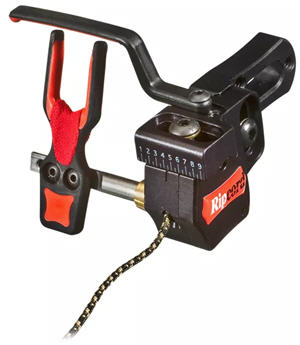
An arrow rest is instrumental in shooting compound bows. The arrow rest functions to hold the arrow and guide it safely out of the bow as it is fired. A good rest will also aid in accuracy and consistent shots.
Drop-Away Arrow Rests: Drop-away arrow rests are very popular among archers. They hold your arrow securely until the drawn string is released. Upon releasing the string, the rest literally drops away from the arrow as the string pushes it out of the bow. This is beneficial because there is no friction between the rest and the arrow. A few popular brands to look for are: Ripcord, Apex, New Archery Products and Quality Archery.
A drop away rest, such as the New Archery Products Apache Drop-Away is a great rest because it is a full containment drop-away, further securing your arrow. It is also highly adjustable for tuning purposes.
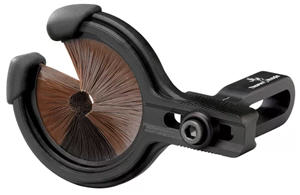
Containment Arrow Rests: These arrow rests, such as the Trophy Taker X-TremeFC, fully encapsulate your arrow, holding it in place in any shooting situation. What makes the Trophy Taker different from other containment style rests, such as the Trophy Ridge Whisker Biscuit, is that the bristles do not contact the feathers or vanes. Despite the tendency for arrow to rest contact, many archers today swear by containment arrow rests for the simple fact that your arrow is always secure and still deadly accurate.
Also read: A Guide to Arrow Rests for Hunting and Target Archery
Improve Your Aim With a Bow Sight
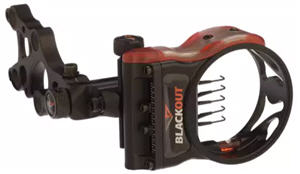
Unless you are an exceptional instinctive shooter, you will need a sight on your bow. A good bow sight will enhance your accuracy and ultimately help you shoot what you want to.
Again, the type of sight that you purchase will depend on the type of shooting you will be doing. Are you hunting? Or are you shooting 3D tournaments? For the hunter, a sight similar to the BlackOut 5-Pin bow sight is perfect. Having three ultra bright fiber optic pins allows you to sight in at three different differences. Many hunters sight their first pin in at 20 yards, the next pin down at 30 yards, so on so forth. This system allows hunters to estimate yardage, draw, and place the corresponding pin on their intended target. The three pins are independently adjustable from one another so that you may sight each one in at a specific yardage custom to your needs.

Pin Slider sight, are a must for
bowhunting.
In addition to multi-pin sights, there are also single pin options. One such option is the HHA Sports Optimizer-Lite, which is fully adjustable with yardage dials. With this sight, you distance your target, fix the dial to the appropriate marker, aim and shoot. Many archers prefer this style to others because it offers extended adjustability. Overall, there are numerous sights available that you should consider. The main point is to find a sight that fits your budget while helping you hit the target.
Peep Sight: In addition to your site, a peep sight will further increase your accuracy. In order to group arrows, a consistent technique and anchor point is crucial. With the addition of a peep sight, you can line up the pins with the peep sight ensuring that your shot is consistent time and time again.
Read Also: A Guide to Understanding Bow Sights
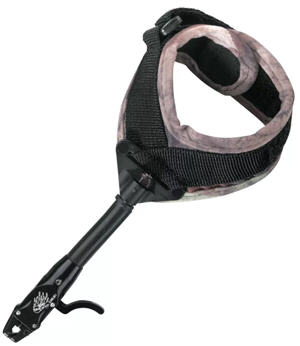
Fire Arrows More Precisely With a Bow Release
A smooth, consistent release will provide shot after shot consistency. There are many different releases on today's market, providing ample opportunity for a customized fit.
Wrist or Caliper Release: The most popular and abundant type of release is a wrist strap caliper bow release. The release attaches to your wrist with a strap. By pulling the trigger, the jaws open and easily clamp onto the string or "D" loop. The trigger resembles that of a firearm trigger, using the index finger to release the string. The entire release feels very strong and secure, partly due to the fact that the wrist supports the draw weight allowing the hand and fingers to relax. Take for example the Tru-Fire 360 Buckle Foldback release, a caliper release that is silky smooth and very reliable. The caliper head is separate from the trigger, which means the trigger can rotate with your hand until you get into the most comfortable shooting position. There are many types of caliper releases, take a look and find one appealing to you.

BlackOut Apostle Bow Release, are the most popular for hunters.
Hand Held Release: The hand held release is generally smaller in size and uses different fingers to release the bow. Most generally, three or four fingers are used to draw the string and hold back the weight of the bow. To release, shooters either use back tension, thumb or pinky triggers. The T.R.U. Ball Max Hunter 3 Caliper hand held release has an independently rotating head like the 360 Buckle Foldback, so you can twist your wrist and hand until they are comfortable without torquing the bow string. The thumb trigger is much different than a normal index finger trigger; however, many archers swear by this system once they have mastered the technique.
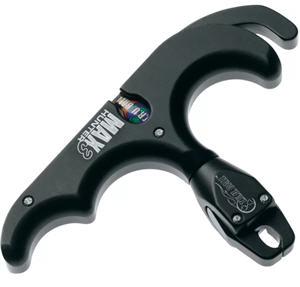
Release
Read Also: Breaking Down the Different Bow Release Aids
Bow Quiver
Hold Your Arrows With a Bow Quiver

LT Quiver
A bow quiver is a piece that attaches to the side of the bow and holds arrows. The great part about having a quiver is that arrows are readily available for follow up shots if needed.
For example, the PSE Archery Hunter LT Quiver holds five carbon or aluminum arrows. It includes a hood that accepts and covers field points or broadheads, and locks tightly to your bow. Like the TruGlo Tru-Tec, most of today's quivers are vibration-free and extremely lightweight. For archers who don't want a bracket-mounted quiver, hip quivers such as the Vista Wrangler Hip Quiver are available as well.
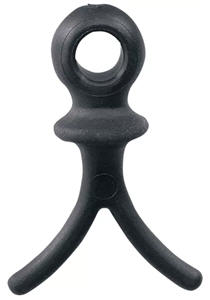
Wishbone Silencer
Use a Bow Silencer for Less Vibration in the Bow
In a hunting situation, it is ideal to have a very quiet bow. In order to suppress vibrations and other noise produced by the bows shot, multiple silencers are available. String leeches reduce string noise with minimal to no loss of arrow speed.
For your bow's accessories, such as the quiver and sights, mini limbsavers function to absorb vibration and therefore minimize noise. For split limb bows, the Super Quad Vibration Dampeners fit in-between the bow's limbs, where they absorb limb shock, ensuring a quieter, smoother and more efficient shot. Overall, silencers are beneficial because they are lightweight and do wonders at minimizing vibration and reducing noise.
Reduce Vibration When You Release an Arrow With a Stabilizer
A bow stabilizer serves multiple functions. Similar to silencers, a stabilizer can also absorb vibration transferred to the riser of the bow. Another great function of a stabilizer is "stabilizing" the shot. Like the Archery Products Apache Stabilizer, most stabilizers are weighted in the front, which provides a counterbalance while the shooter is at full draw. This weight also aids in keeping the bow still after the shot. Stabilizers both serve a purpose and look great, a must-have accessory for any archer.
Also Read: Beginner's Guide to Compound Bows
Watch Arrow and Broadhead Buying Guide video
- 99532 views

